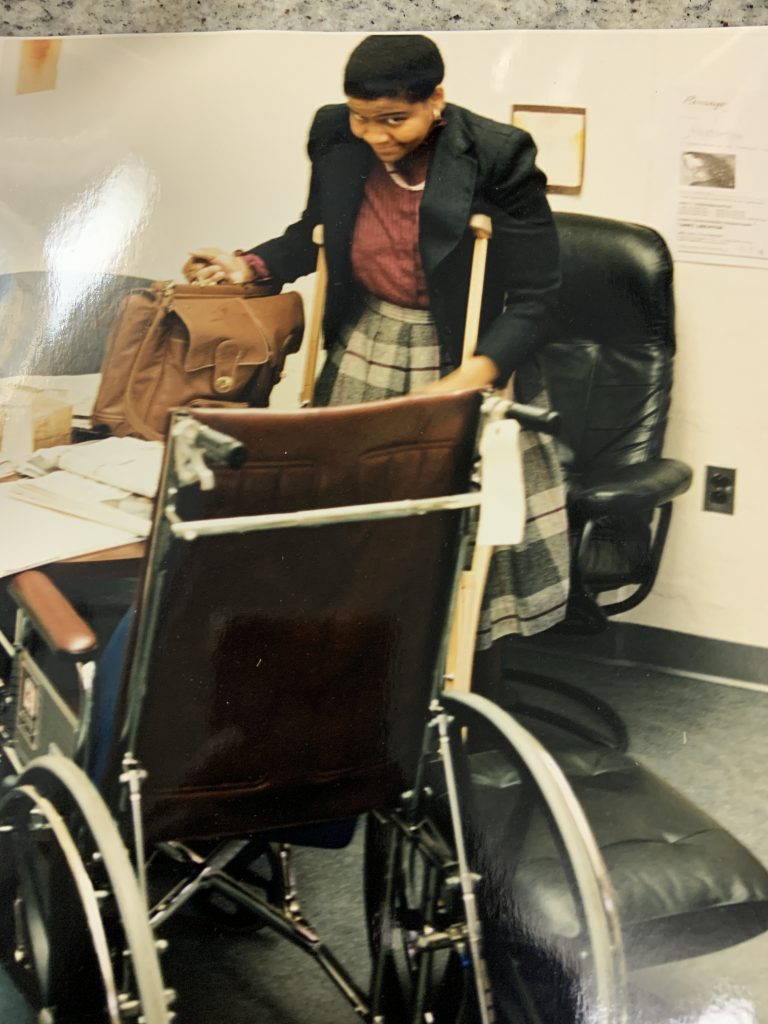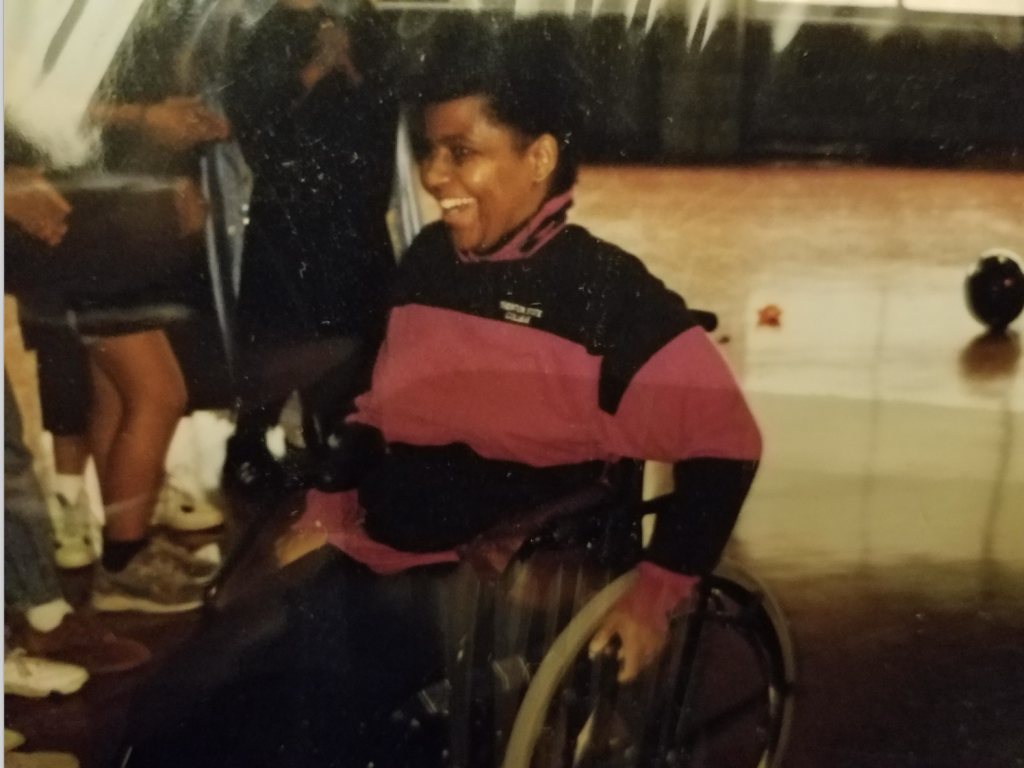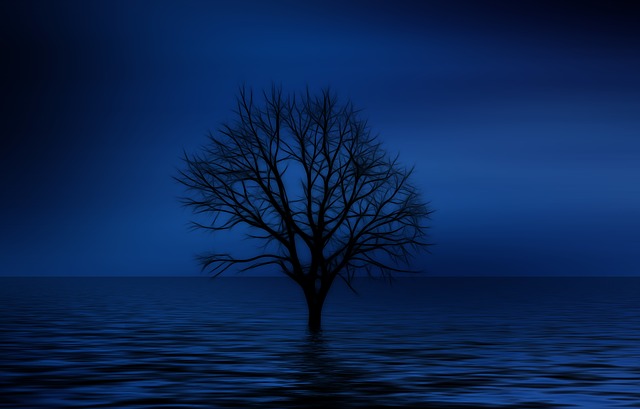
In early 2018, I wrote a short meditation on intimacy and how our lack of social connection has come to be viewed as a public health problem. I confided some of my lifelong cluelessness about relationships and my current loneliness – “no [romantic] attachment, no hope of attachment” – but determined to find ways to stay connected to life through friendships, community and meaningful work. It made a lot of people who care about me sad, and a bit concerned.
My attempt to make peace with my life was, in part, a recognition of the ways that a person’s opportunities for human connection can shrink with age and disability. Most of my non-family relationships are work-related, and as they say where I’m from, there are things you don’t do where you eat. The unmarried people with whom I interact at church or in other spaces of common interest are generally women. There’s also the challenges that older Black women face on dating sites, even as AARP reassures that ageism is less of a problem than it used to be, and there are now dating sites for folks with disabilities.
That essay was also the beginning of a thinking-through the ways in which our longings for human connection are mediated by our acculturation. It was a personal excavation as well as a reflection of a larger constellation of issues that include the representations of older disabled people of color in the media, and the ways we determine the kinds of interpersonal interactions that are acceptable in public, private, and professional spaces. Now, I’m pondering the relationship between the alienation and isolation too many of us experience and the ways in which media industry cultures and norms disregard minoritized people in their newsrooms and the communities they purport to serve.
On his NPR podcast, “It’s Been a Minute,” host Sam Sanders asked Saturday Night Live cast member Bowen Yang a trenchant question that brought this relationship into focus:
What was the culture that made you realize this culture was for you?
Sam Sanders to Bowen Yang, It’s Been a Minute podcast, September 29, 2020
Many of us have spent lifetimes deciding how far to push our way into cultures not meant for us. We’ve had to, as Margo Jefferson so brilliantly puts it, “to imagine what had not imagined [us].” In the current reckoning over race and equity, I’m understanding that each phase of my life has required a new imagining of my own personal and professional possibilities – and a calculated and strategic effort to realize them. Looking back, I can see how I missed opportunities because I didn’t understand the informal rules of the social systems I was trying to navigate. Or sometimes I understood what was expected of me, but the psychic cost of conforming to those expectations felt deadly.
I started reading newspapers when I was seven years old and writing when I was eight. My father and stepmother encouraged these interests by reading with me, giving me free rein to wander the neighborhood library, and signing me up for Saturday morning writing workshops when they could. The high school newspaper and yearbook clubs weren’t options for me because I had obligations at home after school. Journalism wasn’t on my radar as a potential college major because my dad pushed me toward Princeton. My father, a son of the soil who had as many as four jobs at a time while acquiring his high school, college and graduate school degrees, understood the power of formal educational credentials, but knew little of social capital.
Even without a journalism major, Princeton could have been an entrée into the profession. The Daily Princetonian has been a renowned training ground for many mainstream journalists. But early in the first semester, in the fall of 1974, I read a respectful interview with Shelby Cullom Davis ’30 in which he fretted that the presence of women and people of color at Princeton would drag the University down the path of “dear Old Rutgers.” Davis was a cofounder of the Concerned Alumni of Princeton, publisher of Prospect Magazine and leader of many letter-writing campaigns in the campus paper and the Princeton Alumni Weekly denouncing all manifestations of liberalism at the University, including the presence of such people as yours truly. I suspected that the “Prince” would not be a welcoming place for me.
I had to learn, as Jill Nelson put it, “the fine line between Uncle Tomming and Mau-Mauing.” I wanted to become the next generation’s Ida Lewis, without having any clue about the dues that the first Ida Lewis had paid and was paying at the time.
In fact, the one Black person who had been a reporter for the Prince told me that there was an attitude on staff that people of color couldn’t report “objectively” on race. That was the attitude in mainstream professional newsrooms too, as such writers as Jill Nelson and Pamela Newkirk would document in depth some years later. So, while I had a few Prince bylines, I never got the grounding or made the connections that might have led me to a professional newsroom. After graduation, an editor at the Philadelphia Tribune looked over my college portfolio and said he couldn’t hire me because all of my work was about race. Fortunately, some of my peers were smarter about all of this than I was and they went on to brilliant careers in mainstream news and publishing – such folks as Helen Zia, Melanie Lawson, and Laurna Godwin.
After a stint as a public information writer and lay counselor at a comprehensive cancer center, I went to New York University’s master’s program in journalism. The faculty there was skilled and welcoming, and I’m grateful to still be connected to several of them to this day. I went with dreams of doing the kind of literary journalism I loved to read, the kind that requires immersive reporting and strong narrative technique. I learned a lot and produced some work that I’m still proud of – especially a profile of sociobiologist John Tyler Bonner that earned me a science writing award. The legendary Chuck Stone encouraged me to apply for a job with the Knight-Ridder chain when I graduated, but when I saw how low the salaries were and how much student debt I’d be carrying, I concluded that wasn’t going to be the move. So, NYU led to a job writing for AT&T Bell Laboratories, and soon after, the opportunity to freelance for the Black magazines that I dreamed of contributing to when I was a teenager – places where I saw people like me, rendered human and whole.
What NYU didn’t teach me was what to do in the face of racial harassment, or when a man who I was interviewing for a story – a man I thought I knew – forced his tongue down my throat with his unsuspecting family in the next room. The drafts of the article I was writing about him had an undercurrent of rage that I couldn’t explain when classmates asked during our workshop sessions. They didn’t teach me that if you are paying your way through school, and you don’t come from money, you might not be able to afford to an entry-level newspaper job, even back when those were a thing, because the pay was so low. I took a freelance job writing a newsletter for a major health nonprofit and walked away without explanation when I couldn’t stomach their ideas of fun and bonhomie, which included passing around racist cartoons and doing coke after hours. I had a grad school professor who knew some of this, and he wanted me to submit op-eds to the New York Times. But the advice of that Tribune editor and the other Black journalists I’d met since college rang in my head: “Don’t let them pigeonhole you. Don’t just write about race.” I had to learn, as Jill Nelson put it, “the fine line between Uncle Tomming and Mau-Mauing.”
These were the things that drove me away from being a science journalist and into corporate science writing. It wasn’t my dream, but it enabled me to pay my bills and at that time, Bell Labs had rules, diversity initiatives and mentors who could provide some protection and guidance. It also turned out to be fortuitous because I was with the people who were inventing the networked world in which we now live, and I had the job of explaining it. That prepared me for the work I do with scientists today.

And then ankylosing spondylitis began to rob me of my ability to walk, to turn my head, to straighten my spine. I was a young woman, a mother, a wife, a professional, but my body was no longer capable of serving the Claire Huxtable realness that had become my mental model of how to move through through the world. Thirty years ago, I left AT&T to join the faculty what is now The College of New Jersey, unsure of how long my health would allow me to work and wanting to be sure that I’d left no dreams unexplored. Part of my commitment as an educator is that I don’t want students who come into my classroom dreaming of media careers to be as unschooled as I was in the unwritten rules of surviving in spaces that have not imagined them.
It was broadcast journalist John Hockenberry’s memoir, Moving Violations, that became the resource I relied on in thinking about how to navigate the media industry with a disability. The book details how Hockenberry found his way into a storied journalism career after a car accident rendered him paraplegic at the age of 19. It’s a great read, and for me, it was a little spooky. I’m about the same age as Hockenberry, and when I was 19, I was also in a car where the driver fell asleep. We avoided a crash, but Hockenberry’s tale could easily have been mine.
Hockenberry was so important to me that I read his work aloud in classes, included the “Fear of Bees” chapter from his memoir in my Race, Gender and the News course, and even reached out to him on Twitter to thank him. He didn’t respond, which is neither here nor there. I held him up as a role model, both for myself and my students with disabilities.
And then in August 2017, Hockenberry left his plum job as host of WNYC’s The Takeaway. That December, writer Suki Kim reported that she and multiple former coworkers had been bullied or sexually harassed by Hockenberry. Along with the charges of inappropriate sexual overtures, his three former co-hosts – Celeste Headlee, Farai Chideya and Adoara Udoji – disclosed that Hockenberry had undermined them professionally while WNYC management looked the other way. All of them were women whose work I respected, and Chideya was someone I’d regarded as visionary ever since reading her first book, The Color of Our Future, 20 years ago. As part of its response, WNYC ran interviews with Hockenberry’s accusers that are well worth listening to.
Well, damn. The most visible disabled journalist in mainstream US media turned out to be especially problematic for people who looked like me. Thankfully, there are now such disabled media makers as Alice Wong, whose Disability Visibility Project is covering a beat that rarely gets mainstream news attention. But other than Miles O’Brien, the ace science reporter who lost his arm to a few years back, I can’t think of a visibly disabled journalist working in mainstream media – much less a visibly disabled journalist of color. The one exception I know of is longtime Houston television anchor Melanie Lawson, who has been public about having multiple sclerosis and using a cane. In our reckonings over newsroom diversity, I don’t hear that discussed.
In 2018, Hockenberry pleaded for absolution in a Harpers magazine essay. The responses amounted to a collective, “Boy, bye!” (A sampling: here, here, here, and this roundup of comments from some of his accusers.) The critics were right. Hockenberry’s essay is, by turns, dismissive, defensive, depressingly tone-deaf. He owns up to being “obnoxious” and “overbearing,” in editorial meetings, but denies having been “a racist bully.” He admits to exercising “bad judgment” in making “romantic” overtures to women coworkers, but denies accusations of harassment or groping. He talks about the failure of his marriage, his sexual insecurities, and how hard the scandal has been on him and his five children.
Clearly unable to read the room, he suggests that going forward, perhaps he could play a role in helping “[T]o fill a void of human understanding created when the centuries-old, flawed, repressive, and degrading traditions of courtship manners and sexual decorum were wiped out at the end of the twentieth century.” He thinks the late feminist writer Andrea Dworkin might have approved and we should all read Lord Byron and he feels like the title character in Vladimr Nabokov’s “Lolita” – “her innocence lost along with any identity other than sexual” – or something like that. (This last bit had me wondering whether he knew that Nabokov’s novel was based on the kidnapping and sexual exploitation of a real child.)
One thing Hockenberry is right about was that people our age grew up with some screwed-up norms around acceptable behavior at work and in the wild. The boss chasing the secretary around the desk was a punchline during our childhoods. When Rock Hudson, that strong, square-jawed hero, deceived and overpowered Doris Day in the movies, that was a happy ending. Tony Randall’s portrayal of a middle-aged man’s effort to get a teenaged girl drunk and have sex with her was comedy suitable for family viewing.
In 1991, when I helped Sylvester Monroe cover the Senate Judiciary Committee’s hearing on Anita Hill’s allegations against Supreme Court nominee Clarence Thomas for Emerge magazine, I felt the pain many Black women felt as they realized that neither Black men or non-Black feminists fully understood our intersectional perspective. I read Black Scholar’s roundtable on the hearings and the Toni-Morrison-edited essay collection Race-ing Justice, Engendering Power with a certain desperation, trying to figure out who to be, how to be, and what to teach my young daughter and son about who they could be and how they should be. (Patricia Williams’s essay in that collection, “A Rare Case Study of Muleheadedness and Men,” which casts Anita Hill as a Gulliver captured by Lilliputians, remains the most satisfying thing I have ever read on what it felt like to navigate the professional world as a young Black woman.)
As I get older, I struggle to recall images of older Black women that that don’t treat their sexuality as a joke. Even Eartha Kitt can’t get no satisfaction without resorting to sexual harassment.
There’s a popular quote from the late author, Toni Morrison: “If there’s a book that you want to read, but it hasn’t been written yet, then you must write it.” It’s distinctly possible that while she might have meant to encourage, the quote might also have been a rejoinder to people who wanted to take her to task for not having written the books they imagine they would have written. Still, if we’re going to have healthier relationships in our personal and professional lives, we need to produce more media that show what it looks like when mature, self-actualized people of a variety of ages, races, genders, cultures and physical and cognitive abilities work, love and live in community. I don’t know that I’m the person to write those stories – literary agent Kate McKean is probably right that we frequently underestimate what it takes to produce a bestseller — or any other successful media project, for that matter. But perhaps it’s worth a try.
